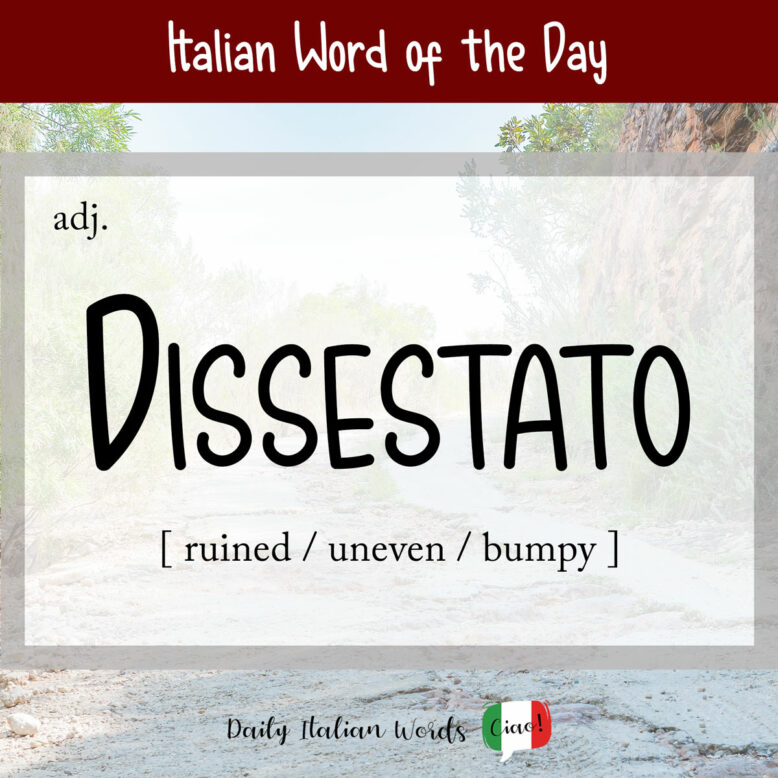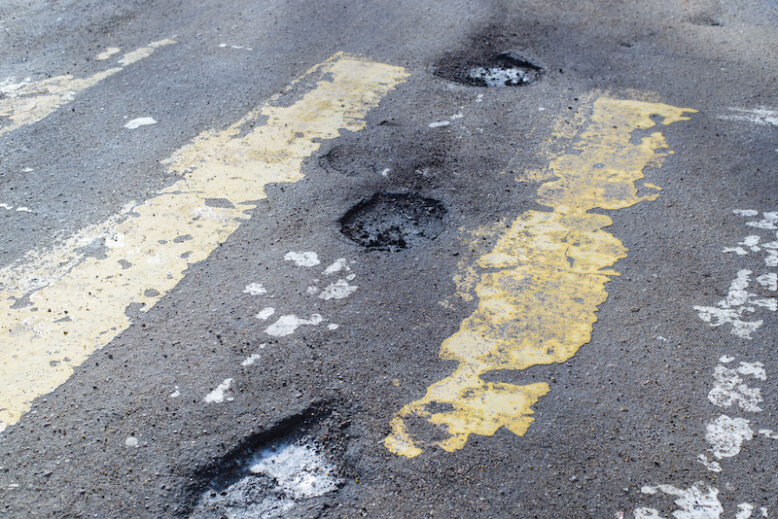Dissestato isn’t the kind of word you will come across in everyday Italian, but for those keen on expanding their vocabulary, it is one worth remembering.

Because it is an adjective, the ending changes to correspond with the gender and/or plurality of the subject:
- dissestato = masculine, singular
- dissestata = feminine, singular
- dissestati = masculine, plural
- dissestate = feminine, plural
First and foremost, it is used to describe things that have been damaged to the point of losing some or most of their stability. Some very common examples include:
- una strada dissestata = an uneven / rutty / bumpy road
- un fondo/manto stradale dissestato = an uneven road surface
- una struttura dissestata = a damaged structure
- un meccanismo dissestato = an unbalanced mechanism
- una casa dissestata = a damaged / unstable house
Dicono che il marciapiede dissestato di via Milano verrà presto riparato.
They say the bumpy sidewalk in via Milano will soon be repaired.

Figuratively speaking, it may also refer to something, such as a company, that is in financial difficulty.
Hanno tentato in tutti modi di salvare l’azienda, ma era troppo dissestata.
They tried in every way to save the company, but it was too financially unstable.
Used as a noun, dissestato (and the feminine dissestata) can denote a person who is in dire financial straits, although this usage is uncommon.
Related terms include the verb dissestare, which means to destabilise, to upset, to unbalance or to ruin, and the noun dissesto, meaning instability or disarray.
Heather Broster is a graduate with honours in linguistics from the University of Western Ontario. She is an aspiring polyglot, proficient in English and Italian, as well as Japanese, Welsh, and French to varying degrees of fluency. Originally from Toronto, Heather has resided in various countries, notably Italy for a period of six years. Her primary focus lies in the fields of language acquisition, education, and bilingual instruction.


